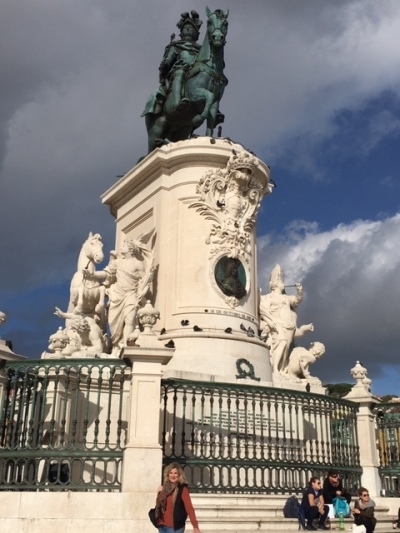
(First King Of Portugal, Alfonso I, reign 1139-1185; also called Alfonso the Conqueror for expelling the Muslims and securing independence of Portugal)
Portugal is a current go-to for Europeans and increasingly for Americans (including BirdDog). Rightfully so. The Portuguese people are renowned for their generosity to strangers. Except to Moors. They expelled them three centuries before Spain did.
The land is fertile, green -- even a kelly green to rival Ireland --everywhere, its cork trees supply the world, grape vines and olive trees are all over. Lisbon's verdant and luxurious Avenida Liberdade makes Paris' Champs-Elysees look like a version of cheesy Times Square.
We traveled throughout Portugal, enjoying tremendously the preserved culture and architecture. The roads are well built and kept, and even the narrow mountain lanes and dirt paths we strayed onto were maneuverable. However, I'm glad that I made a last-minute upgrade from a Euro roller-skate car to a Mercedes, even though twice the cost but more than quadruple the comfort and safety. We drove quite a bit from south to north and west to easy, to be exposed to as much countryside as possible, and exceeded our hopes.
The food along the way is mouthwatering, the baking rich yet light, the Portuguese table wine -- especially the whites, and of course aged Ruby Port, (as in Spain's reds) fragrant, crisp, rounded, and almost sensuous to the palate. The prices for these kingly repasts are relatively economic. I almost always had various octopus recipes, although not Kosher. I did avoid the giant tiger-prawns as large as small lobsters, and the pork roasts and bacons were appealing even to my Kosherist eye and nose. The national dish, a mix of cod and eggs and seasoning is superb. (Warning: as in any tourist country, never go into any restaurant with photos at the entrance or with hamburgers on the menu. Touristy mediocre food, and not much less cost, actually a much higher cost due to missing out on affordable great food.)
The weather was a mild 60F in the daytime but intermittently raining, not pouring, so the winter in Portugal's Med climate is fine for touring, plus far less tourists to bump into.
Now, on with some photos (OK, a lot of photos):
Carrying over the custom from the Moors, Portugal is famous for its tiled buildings, and interiors. Here are a few from Lisbon.
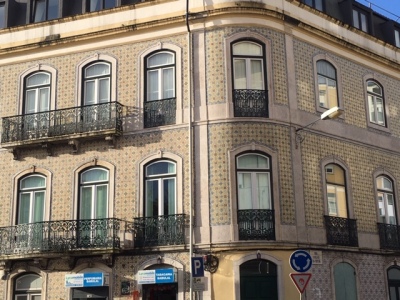
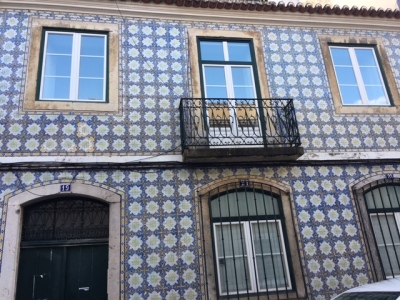
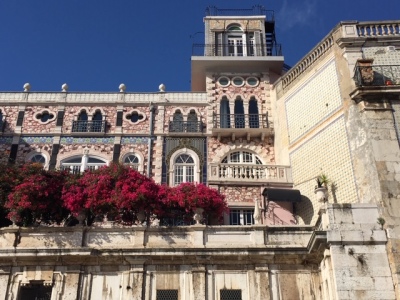
The trams date from the 1930's, able to take the hills, narrow streets and sharp corners of Lisbon. Tram 28 is a good way to sample several tourist neighborhoods, dropping off at the Se' cathedral (no photo, but another of many churches pictured) and the path up to the Citadel and its view over the city. In an ongoing series of photos of Gavin in cannons at redoubts around the world, here is his latest contribution to being fired from a cannon.
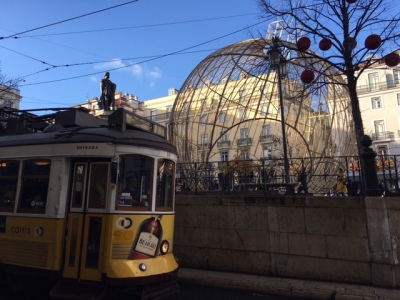
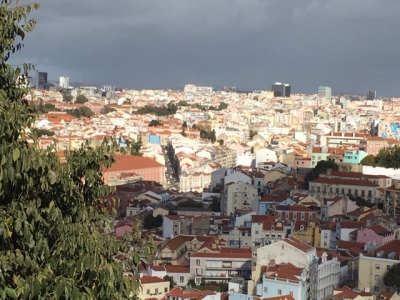
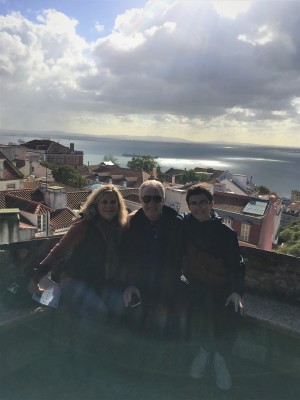


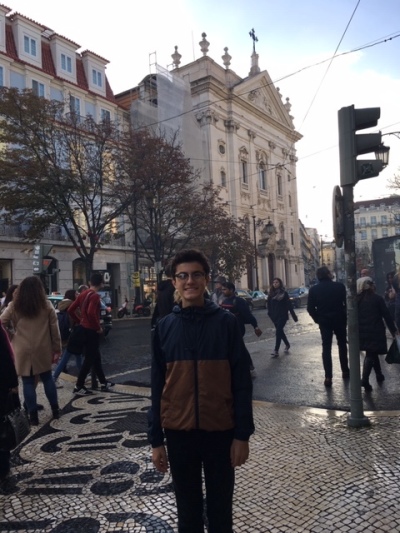
My travelogue wouldn't be complete without a memory of the Inquisition that gripped Spain and Portugal, a way to grasp Jewish assets and to affirm Catholic superiority over all others. Today, Portugal and Spain are granting citizenship to several thousand Jews whose ancestors were expelled, and some "conversos" (Jews who hid as converted Christians) come out. In 2008 a memorial to the 1506 Massacre Of Jews was placed near the spot where the Lisbon Inquisition took place.
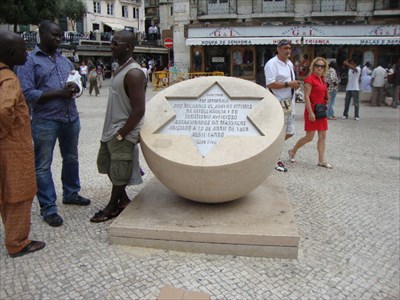
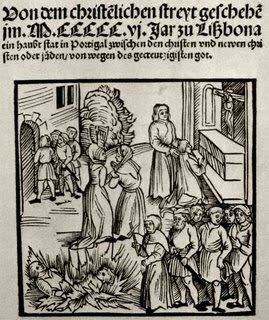
Before leaving Lisbon, we intended to take a day to visit several museums. Instead, we were so taken with it that we spent an entire long day taking in the wide-ranging and well-curated collections of traditional and historic art forms from around the world and the chronologic and informative collection of Portuguese modern art from the early 1900s to the present in the Gulbenkian museum complex that with lush gardens and three large buildings takes up a large city block. The named benefactor was an Albanian refugee to Portugal who amassed a huge fortune trading oil (5% commission on each lot) and contributed his collections to Portugal. The arts foundation is one of the richest in the world and goes afar to support artists, exhibits, and museums around the world. I am not a fan of most modern art (and am left cold by NYC's MOMA and Gugenheim, as well as such museums in San Diego and elsewhere). However, the Gulbenkian collection is totally capturing and so well described as to be a wakening as well as an informative history of the surrounding politics of the times I read on the placards. I was so lost in the specifics of each exhibit that I took few photos but a few items were so unique to demand capture anyway. Well done memorial to your taste Mr Gulbenkian.
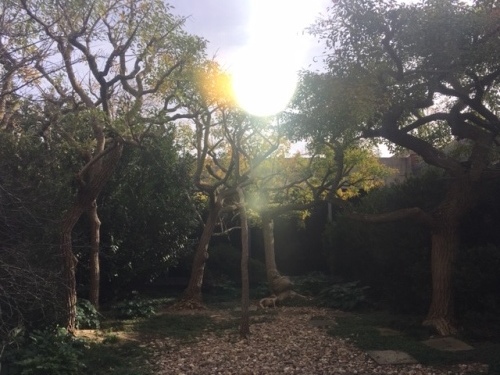 The gardens.
The gardens.
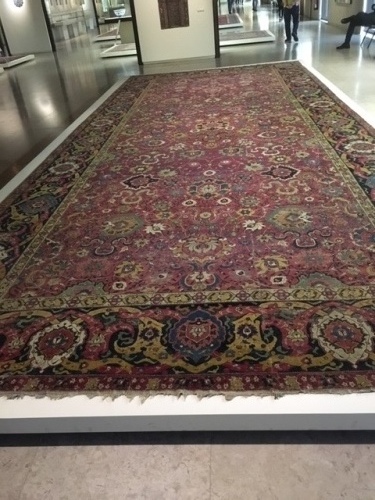 The best displays of "Oriental" carpets I've seen.
The best displays of "Oriental" carpets I've seen.
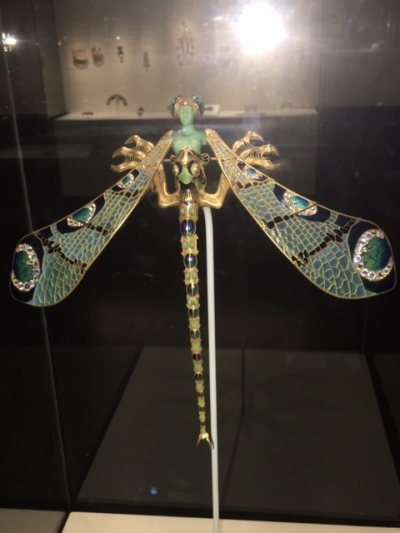 An entire room of 1800s Lalique.
An entire room of 1800s Lalique.
Take the time to read this placard and examine the real photo images.
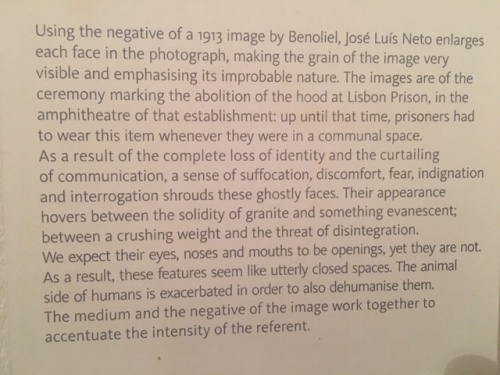
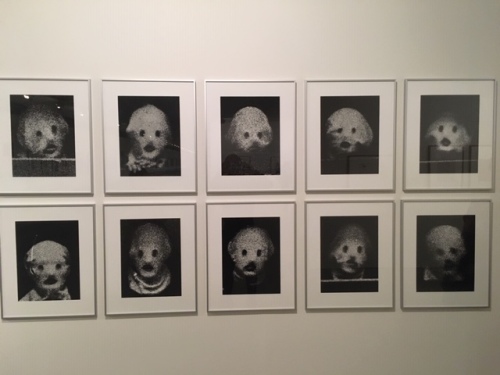
This 1945 triptych view of war reminds us of the unglorious aspects.
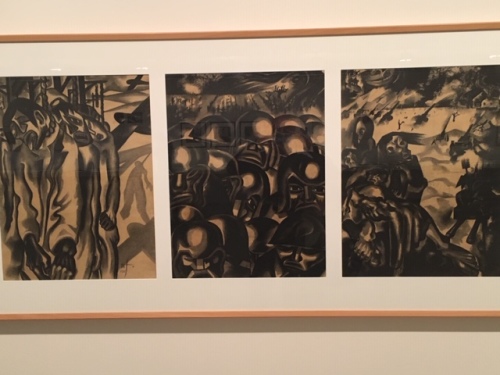
We paid a lot -- and so very worth it -- for a personally guided daylong tour of Sintra, nearby Lisbon, the spiritual mountain on which the wealthiest built palaces, several of the world travelers bringing back the widest variety of bushes and trees that with two hundred years to mature have evolved to fascinating forests covering the mountain estates. We visited three palaces and one Moorish castle, and took a break for lunch in the touristy but charming town of Sintra for a fantastic charcuterie of meats, cheeses, sardines, olives, and breads, and for me the best Ruby Port (Portugal being famous for its Port wines, the alternative to Ruby being less sweet Tawny) I've ever had which I savored for an hour and if there'd been time I would have savored for several more hours.
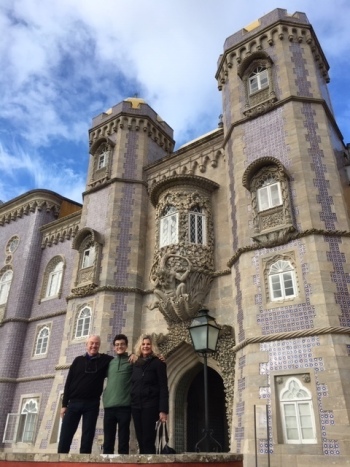
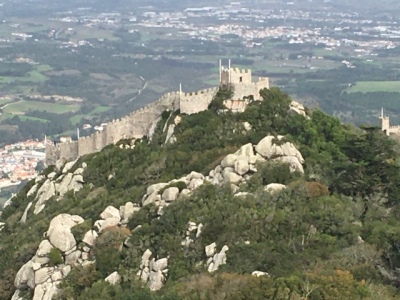 Moor Castle
Moor Castle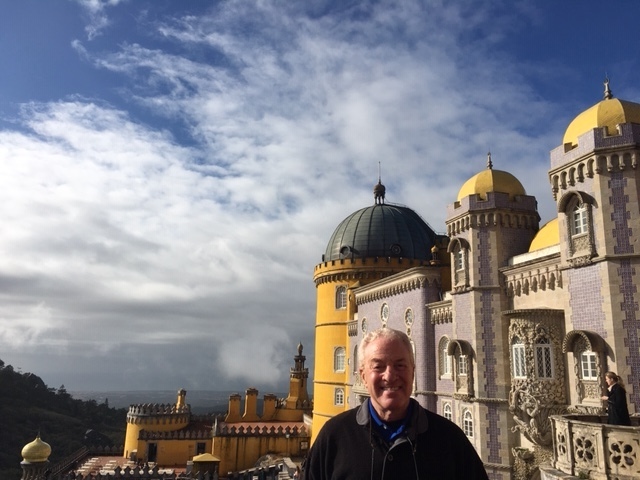
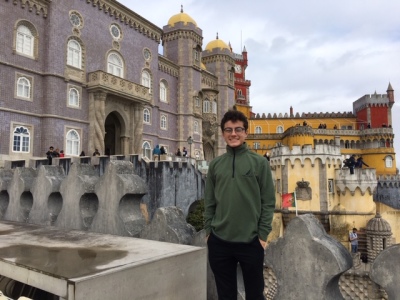
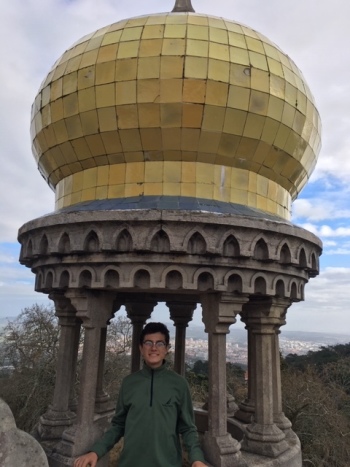

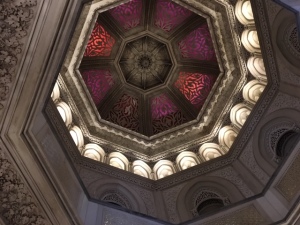
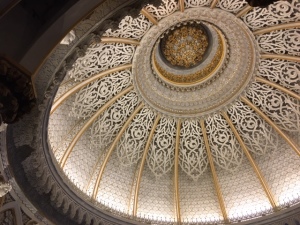 And we even had a Fado concert (Portuguese songs of the seafaring life) in the music room of one of the palaces.
And we even had a Fado concert (Portuguese songs of the seafaring life) in the music room of one of the palaces. 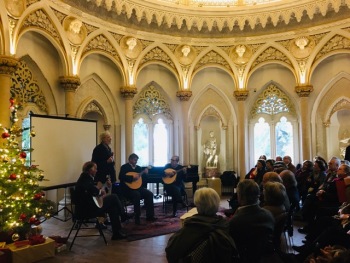
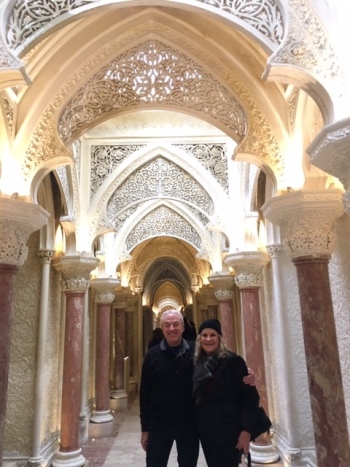
We went on to Cascais, the seaside resort town about 20 miles from Lisbon. Estoril is about 2 miles away, famed for its (to me rundown) casino. Our room at Cascais had an expansive view of the ocean, and outside miles of walk/bicycle trail along the ocean, including a blowhole (where wave water rushing in to a narrow cliff area blows high into the air). The village of Cascais is charming, not tacky for tourists. These ladies at the bakery coffeeshop won my heart with their talents (and beauty), the one on the left the mother of the one in the center. Baking is done upstairs through the night. The second -- yellow -- building pictured at the waterfront is for high spending diners. The other one is reserved for Naval officers. (In Portugal as in other countries, the Navy stakes out the most scenic spots by the ocean.) The boats are those of the local fishermen.

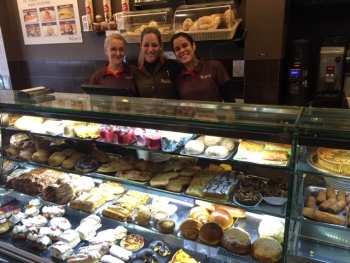
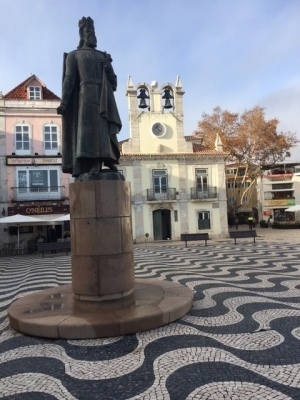
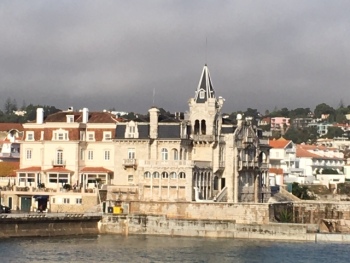
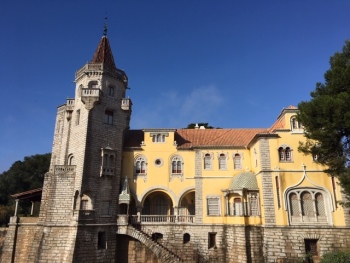
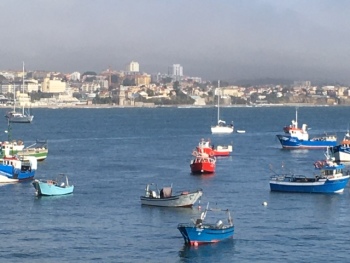
We next headed to northern Portugal's central interior to Batalha and Alcobaca. Batalha has an enormous cathedral (as any self-respecting medieval city). What makes it special is that it was also in the 1300s the king's palace added on. Inside there lay Portugal's Romeo and Juliet, so to speak. The king forbade his son from marrying his love and had her killed, Thirty years later the now king had himself and his departed love buried together. The sarcophagus cover uniquely exhibited a formerly unheard of image for sarcophogi of the couple holding hands. In another large chamber is the Tomb of the Unknown Soldier from Portugal's fighting in WWI. (Portugal was a late entrant against Germany, being moved by commercial tensions between their African colonies and the German submarine interference of Portugal's exports to Britain, Portugal's main trading partner.) This drawing hangs on the wall among displays from military units who fought in the gruesome trench warfare.
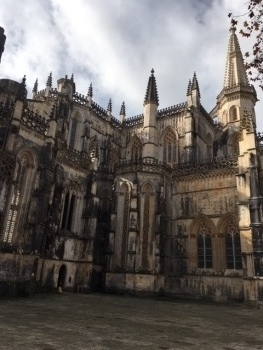
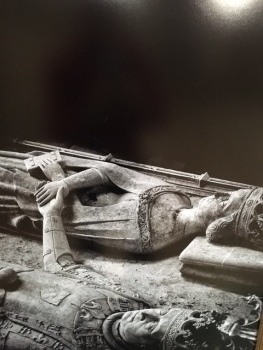
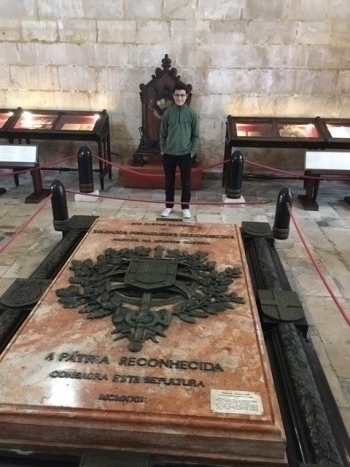

Onward to Alcobaca's monastery. The wings were added for monks and then also served as a barracks during WWI. Within, this large alter caught my eye due to its intricate details carved in clay and colored.The cafe across the plaza served us a memorable stew, breads and dips, and, of course, more wonderful Portuguese wine. Then back to Cascais for the night.
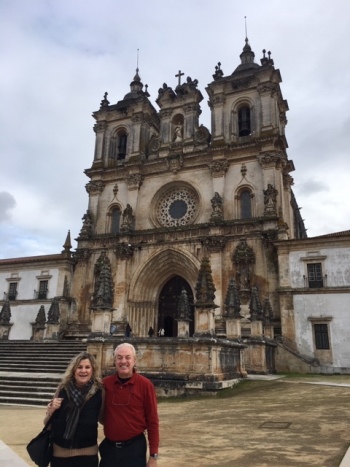
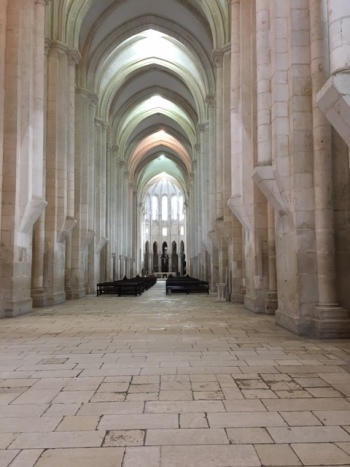
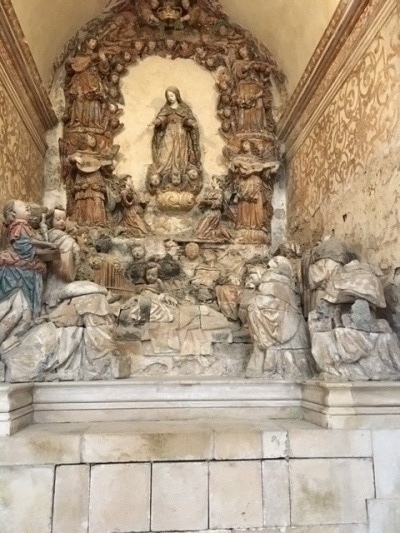
Now, east about 120 miles almost to the border with Spain. Elvas is supposed to be the largest fortification in Europe, dating from Portugal's late 1600s defensive wars against the Spaniards who wanted to conquer Portugal. I did not take a photo but here's an aerial view I found online.
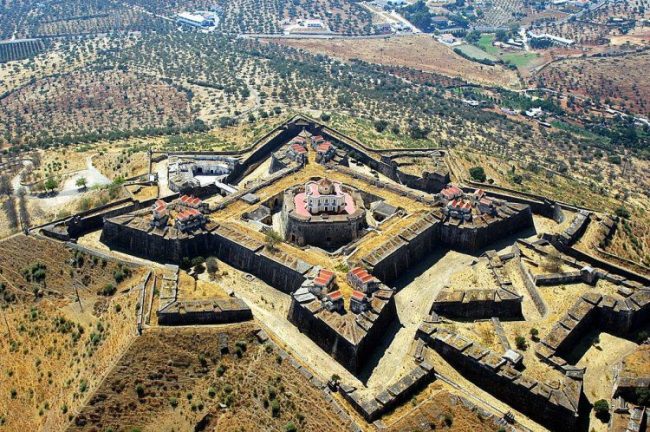
About 20 miles backtracking West is Evora. The descriptions I found before the trip didn't do justice to our time there and what we saw. There is a small Roman ruin overlooking the valley. The cathedral, of course, was beautiful. In a wing was the 2800-piece diverse collection of Nativity scenes from around the world contributed by the collector. In the Chapel Of Bones, the monks dug up the local graveyard to line every surface of an approximately 2000 s/f area, to contemplate mortality. At night, the main plaza was peaceful and the, again, excellent restaurant we found was salivatingly good.
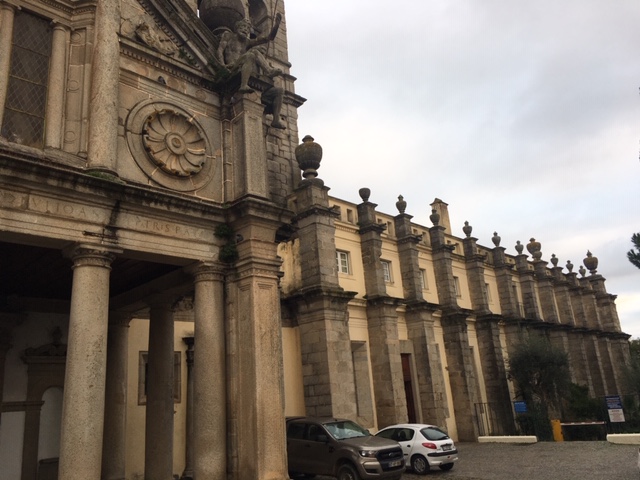

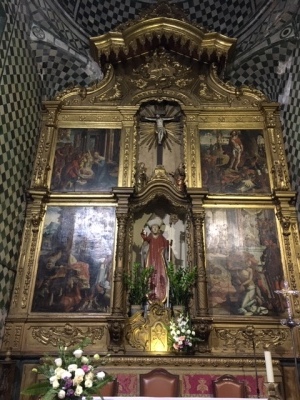
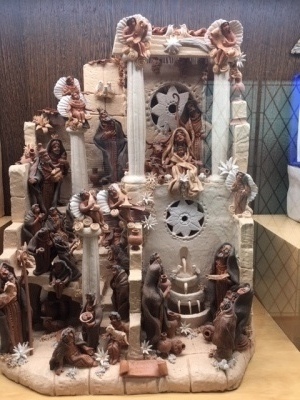
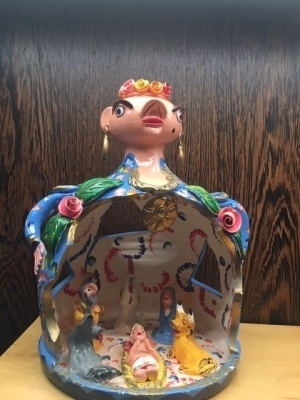

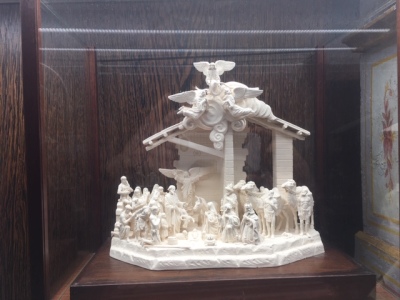
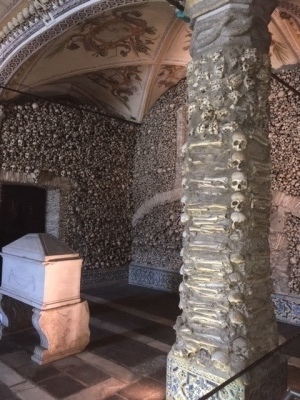
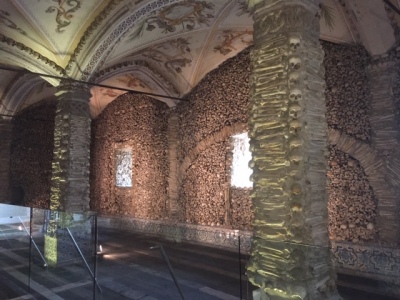

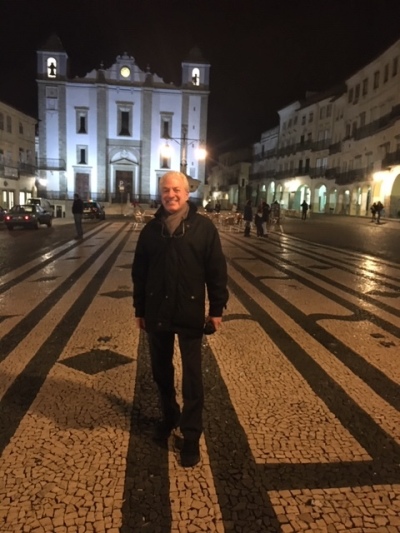
Then, onward northwest for about 90-miles to Obidos for the final city of our exploration. Obidos is a castle with the town inside the walls. Our stay was enriched by staying in a separate house on the grounds of a mansion with to let rooms on an estate near the foot of the hill on which the castle stands. In the small town we followed a surprisingly large procession to a church memorial service for a locally popular man, a reflection of the bonds that exist in a small town. The shops were for tourists, but we found a restaurant with the best octopus yet in Portugal, and some conversation with a Brazilian family visiting. As the Christmas lights came on, the photo subjects lit up too.
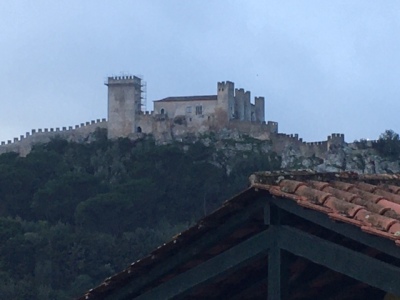
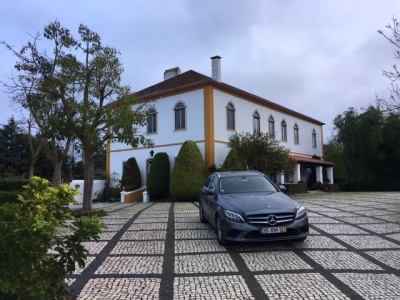
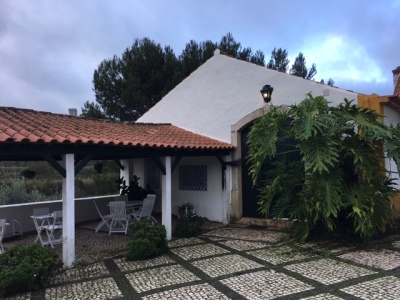
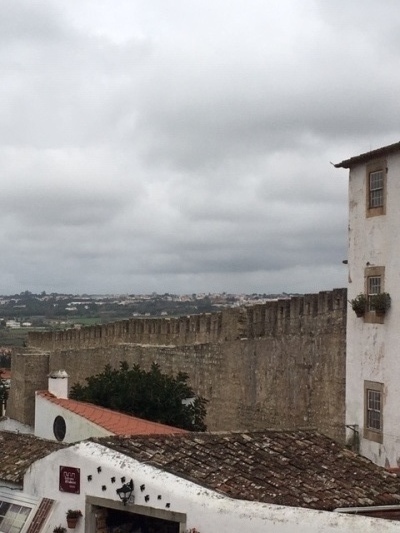


Our breakfast was served in the main house by this smiling and attentive servant, shared with a pleasant young techie couple from Madrid.
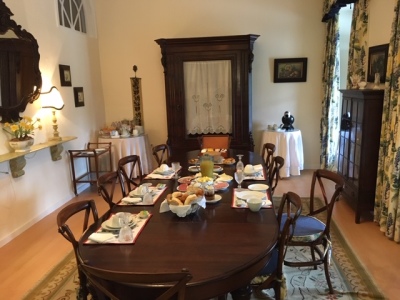
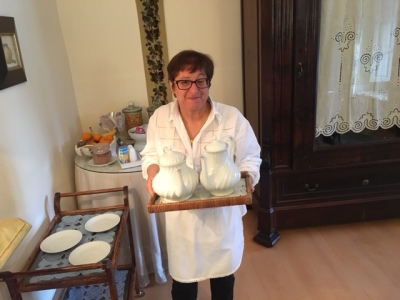
From Obidos we drove back to Lisbon. The only mistake I made in our plans: staying at a hotel for convenience of a dawn takeoff near the airport in what turned out to be a seedy neighborhood. The airport is right in Lisbon, so I should have reserved in a better location. Going and coming was on British Air, clean and good service, but charging huge ripoff surcharges and even more charges for reserving seats. This airway robbery is made worse by transferring at Heathrow, a giant mess of an airport. Still, if that's all the discomfort to visiting Portugal, worth it.






